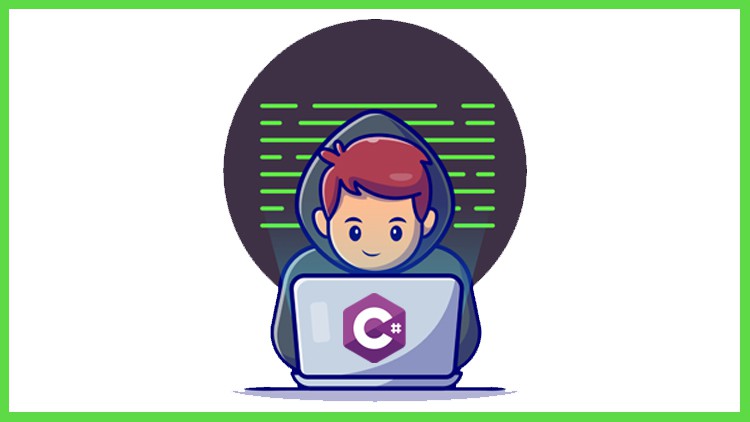
The theory you need for part 2.
What You Will Learn
How the memory works: Stack vs. Heap.
Creating and using variables: Value type vs. Reference type.
Creating and using properties (characteristics — adjectives)
Creating and calling methods: Regular vs. Extension methods (behaviors — verbs)
Defining and using classes and objects: Blueprint vs. Instance (things — substantives)
Encapsulation and Separation of concerns
Exception (error) handling and debugging.
Loops: for vs. foreach vs. while.
Arrays, Collections, and queues.
Conditional logic: if vs. switch.
Linq methods and Lambda expressions.
Generic types.
Requirements
-
No programming experience needed. This in an introductory overview of C# programming.
Description
Join me in this exciting foundational course on C# theory taught through short code snippets contrasted with real-world scenarios. Armed with the knowledge from this course, you can confidently begin your path toward becoming a seasoned C# developer.
Don’t procrastinate. Take the opportunity to learn a new language, go into the world of coding full of hope and energy, and build awesome applications. I know you can.
As this is a theoretical course, it doesn’t show how to build an entire application; we do that in part 2, where you’ll install the necessary tools and build a to-do web application from scratch.
Frequently asked questions from students before they took the course.
- How does the .NET runtime handle memory?
- What is the Stack and the Heap?
- What are variables, and how do we use them?
- Why do we need structs, classes, and records?
- How do we add behaviors to our program?
- How do we describe the characteristics of an object?
- Is debugging necessary?
- What if I need to repeat something? Can it be done?
- Why and how do we branch our code with conditional logic?
I answer all these questions in the course, describing how to implement variables, many kids of properties (characteristics, adjectives) and methods (behaviors, verbs), the difference between classes (blueprints, substantives) and objects, and why encapsulation and separation of concerns are paramount, four types of loops, and how to debug and implement exception (error) handling.
Courese Image by catalyststuff on Freepik
Who this course is for:
- Beginner developers and those new to programming.